
Patagonia’s Micro Puff Storm combines weatherproofness and warmth for days when it might spit form the sky and be oh so cold.
Some Like It Stormy: A Review of the Patagonia Women’s Micro Puff Storm Jacket
As a self-proclaimed queen-of-jackets, I pride myself in my overstuffed closet of puffy coats, hard shells, softshells, fleece, and rainwear. If a layer exists – it is likely I own it. Fortunately, I am always looking to feed my jacket habit, and I was for lucky enough to spend the latter half of winter testing out Patagonia’s Micro Puff Storm Jacket. The Micro Puff Storm jacket is an extremely light-but-durable layer that adds value to my coat quiver.
Before we dive into the details, a bit about me: Based in Bend, Oregon, I consider myself a backcountry recreationist, meaning I love ski touring, but I won’t be chasing you down on the skin track. Although I spend most of my week behind a computer, I spend most of my weekends exploring the Central Cascades—primarily via skis—although good convincers can talk me into a hike now and then. I am a petite 5’3″, with narrow shoulders, and always run a bit cold. I like functional multipurpose layers that meet my style aspirations. I tested the Micro Puff Storm for about six weeks during uphill and downhill skiing in Central Oregon. Bend is considered high desert; we’re on the drier side of the Cascade divide. It does snow, most often in copious amounts, a few thousand feet above town. I tested the jacket in size small, which fit nicely.
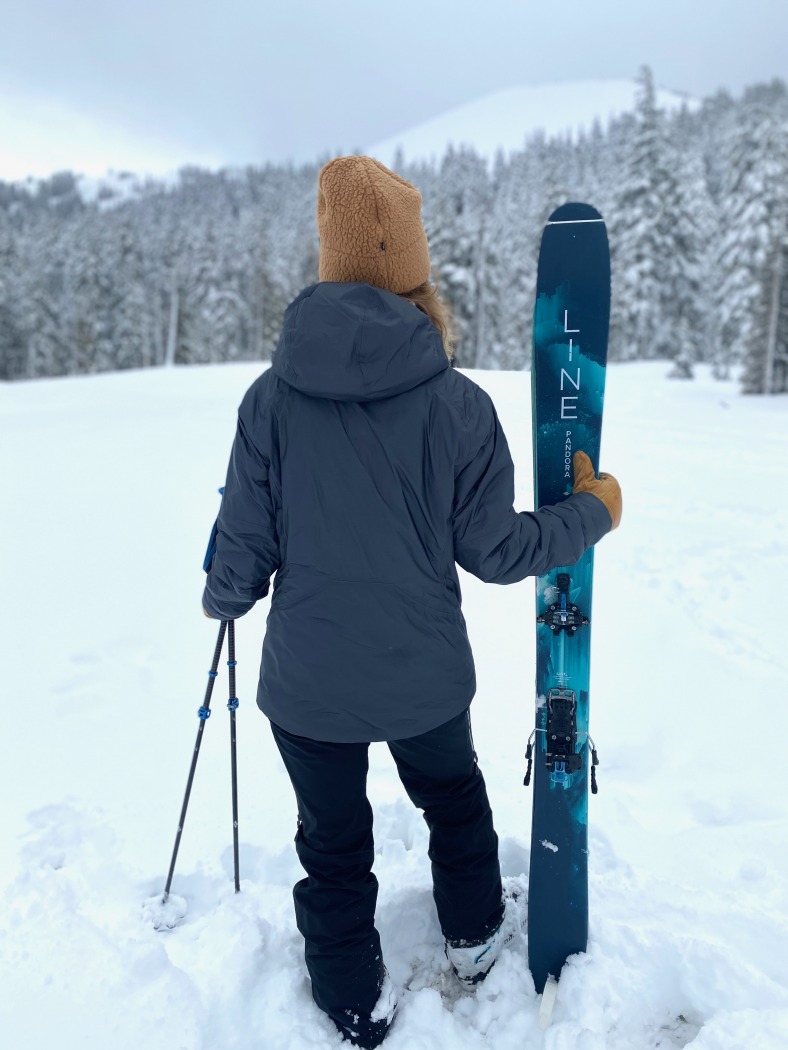
The Micro Puff Storm could also easily perform double duty as a belay jacket for climbers as well as the alwayskeep-in-the-pack puffy.
Insulation and Warmth
The Micro Puff Storm is an insulated, waterproof shell jacket for cold, wet, and windy weather. It weighs surprisingly little for an insulated shell “combo” jacket, topping off at 485 grams. The shell is composed of two-layer 100% recycled nylon, and the insulation is roughly 90-grams of PlumaFill (Patagonia’s proprietary synthetic insulation, which mimics down surprisingly well). The nature of the PlumaFill allows this jacket to be super compressible and packable—something I appreciate when stuffing it into my pack. The Micro Puff Storm also has an adjustable helmet-compatible hood.
The “storm” suffix is apt. Think of this as a double-duty puffy. It insulates like a reliable non-expedition category puffy. If the skies open up with some drizzle, wet or dry snow, the “storm” part has you covered. The outer fabric, an 8oz. Pertex Quantum shell, integrates an H2No membrane, the company’s breathable/waterproof laminate. The outer shell is also treated with a PFC DWR finish.
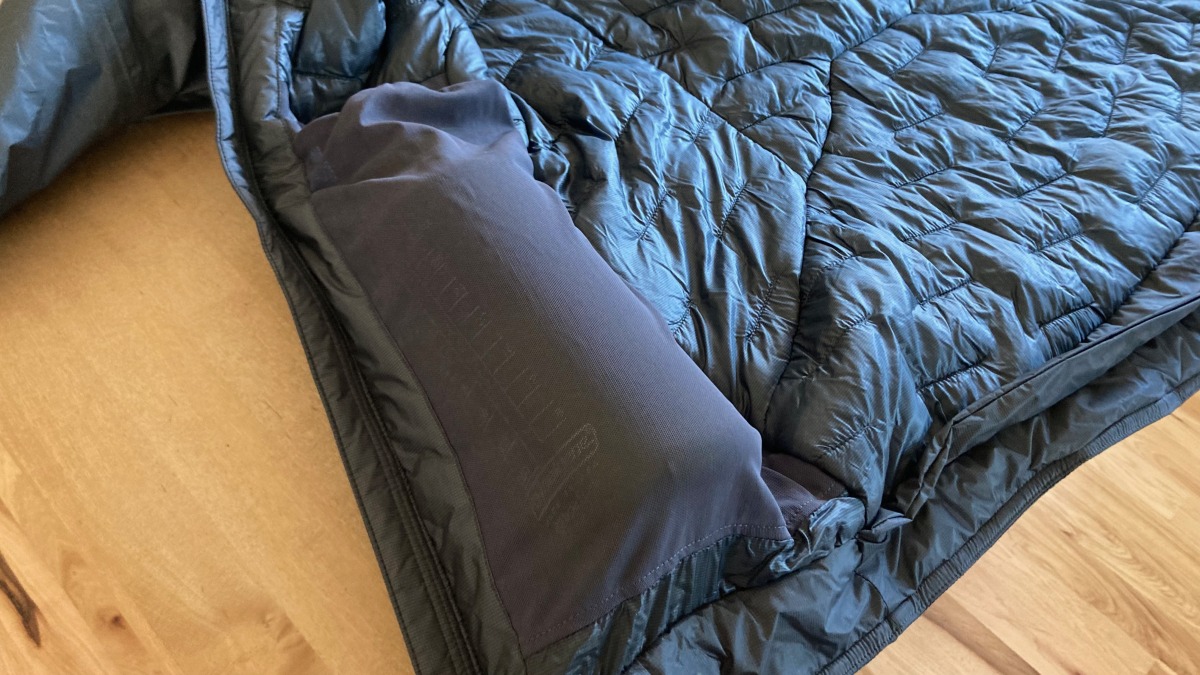
A few things to note here. The interior is quilted and also features two large stretchy mesh drop-in pockets suitable for skin storage or, as pictured here, for keeping a Nalgene/water warm.

The outer fabric is treated with a PFC free DWR to compliment the integrated H2nO membrane.
During my testing, I found the Micro Puff Storm to be warm, extremely windproof and waterproof.
In fact, when I used it on sunny days, I was sweltering. This is not a jacket to be wearing on any vigorous uphills. Like many puffys, it traps heat well, and dumping heat by unzipping is unsatisfying except on the coldest days. Puffys are my preferred layer of choice, and therefore, I have several lined up in my closet. The Micro Puff Storm takes the cake for my warmest insulated layer, removing the Arc’teryx Thorium and Rab Microlight Alpine from its current top positions. I mostly credit the insane warmth of this jacket to its shell, which traps heat and blocks all wind. For treacherous stormy weather, this was welcome; however, I missed some breathability when the sun came out. I loved this jacket at the start and end of my uphill climbs—in the parking lot and at an exposed summit. It was rare for me to wear this jacket for more than a few hundred yards on a skin track.
I usually carry a few jackets for a ski tour so I can layer-up and layer-down based on the weather and my temperature. Although this is still my preference (see above: jacket queen, lots of layers), I found that the Micro Puff Storm could often function as a one-size-fits-all. Instead of packing a hard shell, mid-layer, and a puffy, I could often wear a base layer on the skin track and count on this single jacket for the ski down. For quick laps on Mount Tumalo and Mount Bachelor, I enjoyed the simplicity of the Micro Puff Storm. It compressed well in my pack and provided immediate head-to-toe warmth (it keeps the core toasty) and wind protection.
The Micro Puff Storm again excels in terms of protection from snow and rain for an insulated piece. In Central Oregon, we get a lot of wet snow, and I was stoked to have this in my arsenal to protect me from the elements. The jacket repelled wet snow and rain at the same level as my Gore-Tex hard shells. No lie. Patagonia’s “H2No” protection has exceeded my expectations. At this level of protection, though, users will sacrifice some breathability, which is the key limiting factor of this layer.
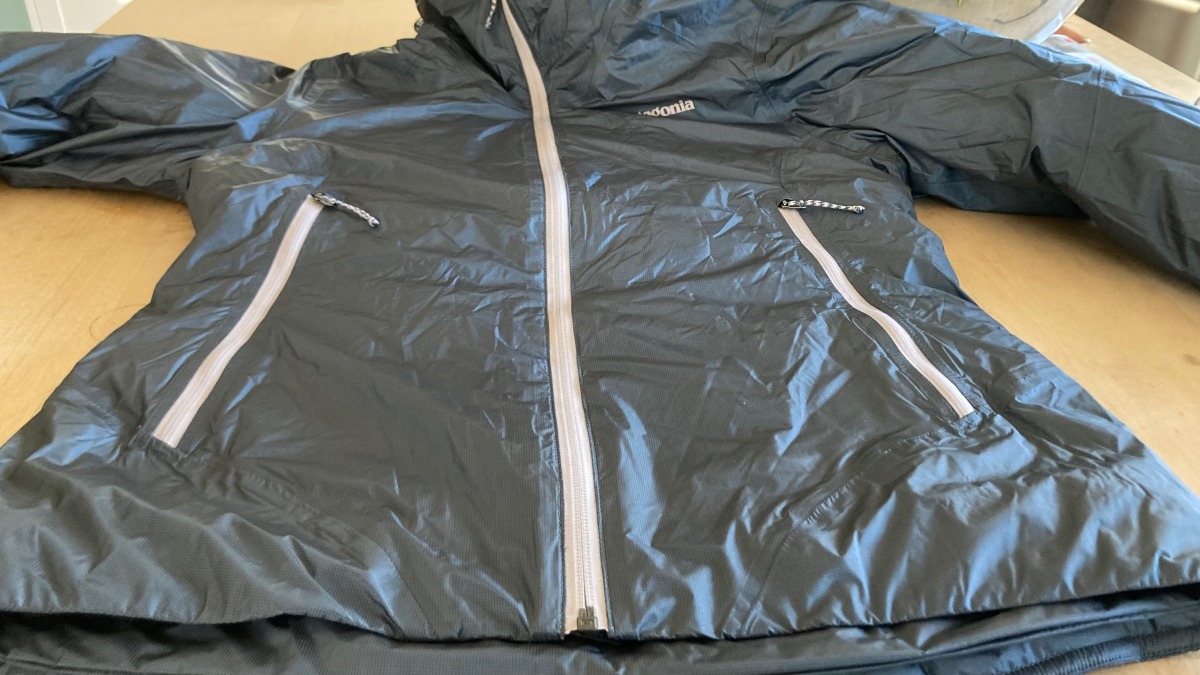
The Micro Puff Storm has a one way zipper, not a two-way, like on some belay jackets like the Storm’s cousin, the DAS Light.
Durability
Despite the lightness and packability of the Micro Puff Storm, the jacket is extremely durable. It holds up to sharp ski edges, surprise tree branches, and rock- and ice-covered summits. Even for more nontraditional pursuits, it has failed to show any wear-and-tear at all: I threw it in the trunk of my car with my 100-pound dog, wore it while eating messy breakfast burritos, and shoved it in a cargo box with ski boots. Still good-as-new.
Patagonia, like many outdoor-specific apparel companies, touts an impressive line of puffies. The Micro Puff, as the name of this piece suggests, is in the lineage. There’s also the DAS Light, a Micro Puff relative. Both use the PlumaFill synthetic fill and are beloved by alpinist and the fast & light set. Warm when wet is a mantra of these puffies, and they are light. Neither integrates an H2No membrane. I’ve heard the Micro Puff can lack durability; the face fabric is relatively light, though; ask Jason about his mended Micro Puff. I wanted to bring this up as the names of the Micro Puff, and the Micro Puff Storm are pretty similar, yet their durabilities are not.
Pockets and Other Features
The jacket features two massive handwarmer pockets with the zippers measuring more than nine inches from top to bottom. The size is particularly helpful for storing extra snacks (goldfish, always) or communication devices. The zippers are long enough that I can access my side pockets with my pack still strapped around my waist, which is a nice bonus. The pockets also function as a vent—if opened, they can help dump a small amount of heat as they have a mesh backing.
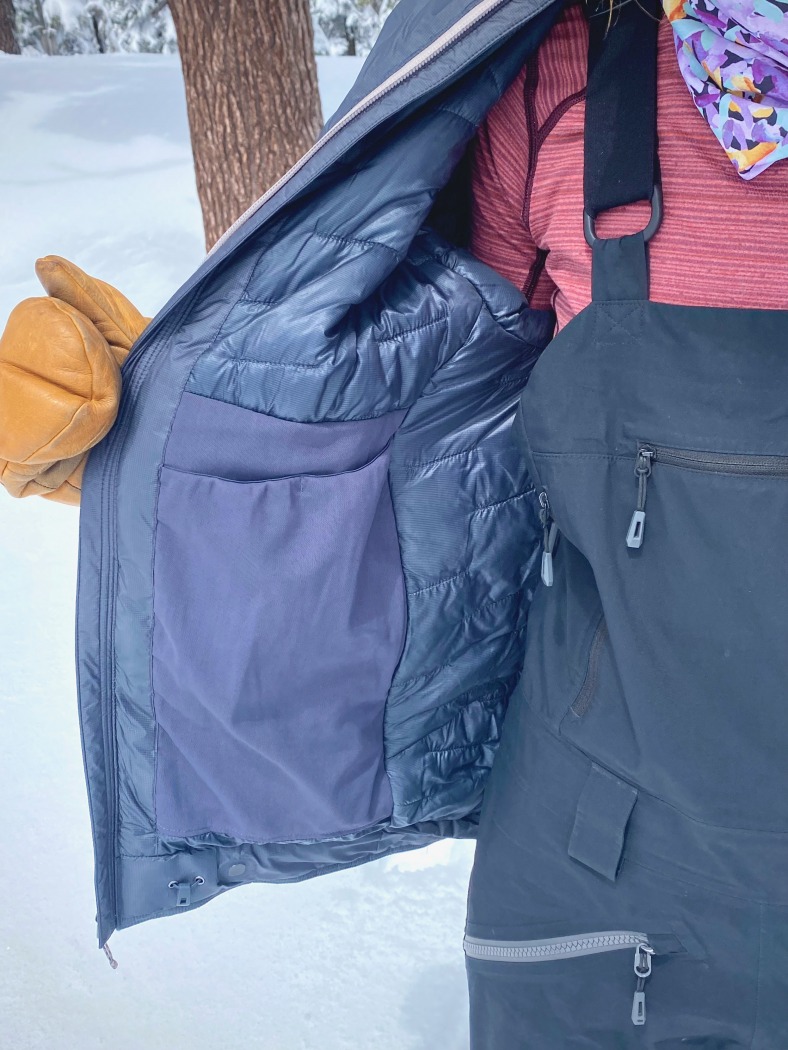
The drop in pockets are well designed and suitable for on-the-go skin storage.
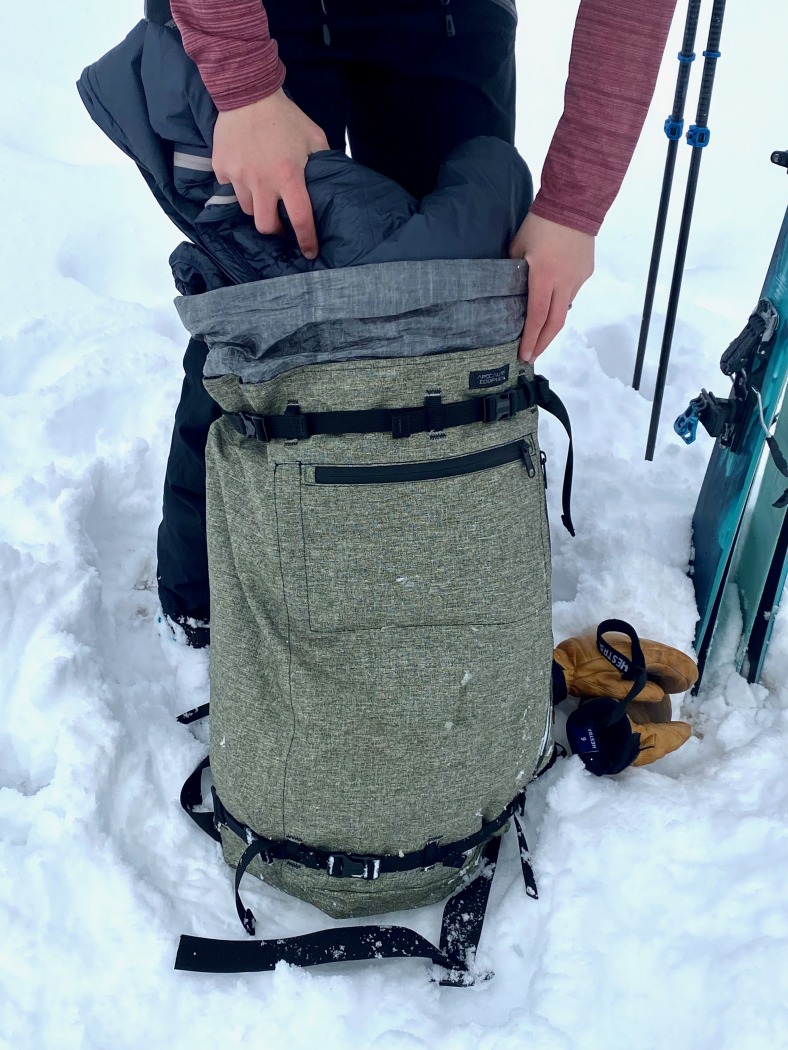
And like many puffiness, sometimes you simply stuff them in the pack and carry on. The Micro Puff Storm packs down well to include on day tours with a 25-30 liter pack.
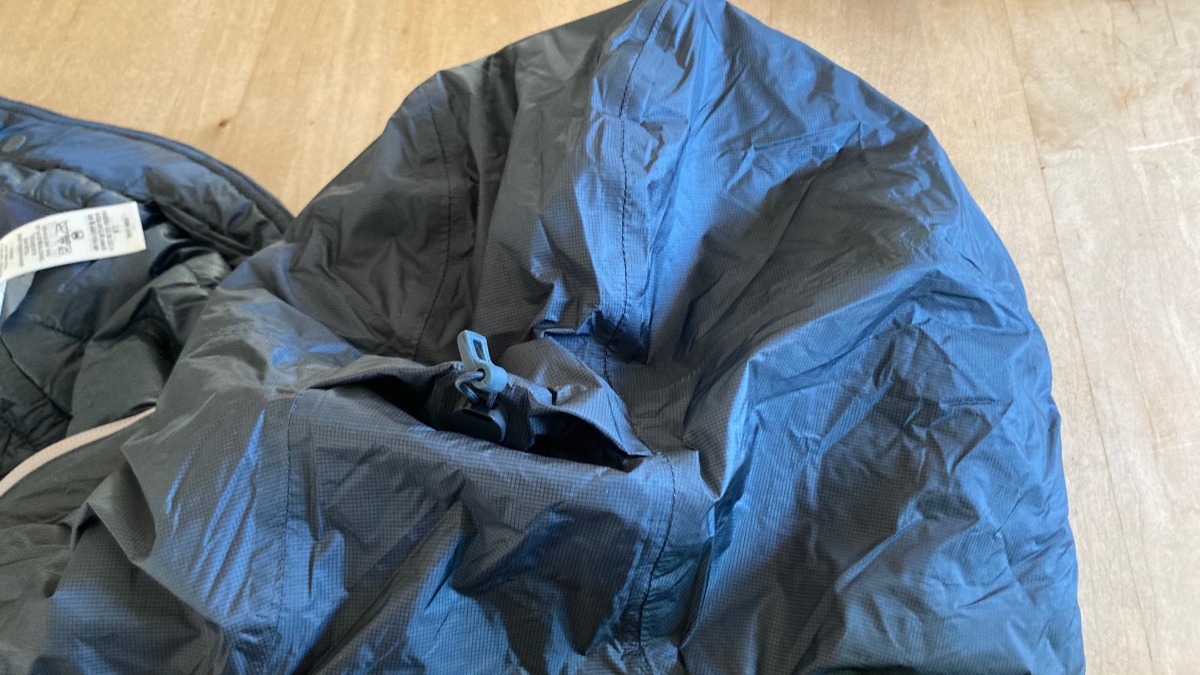
The Micro Puff Storm has an adjustable helmet compatible hood.
The interior of the jacket also contains two mesh drop pockets. Patagonia designed these pockets to carry skins if necessary. Although I prefer to carry skins in my pack, I could use these interior pockets to warm up frozen skins on an extra cold day.
The jacket does not contain any other pockets, contributing to its overall lightness. I would sacrifice some weight for a small chest pocket to carry other smaller items. The large side pockets sometimes turn into a black hole, and a fun game of “where did I put my car keys?”
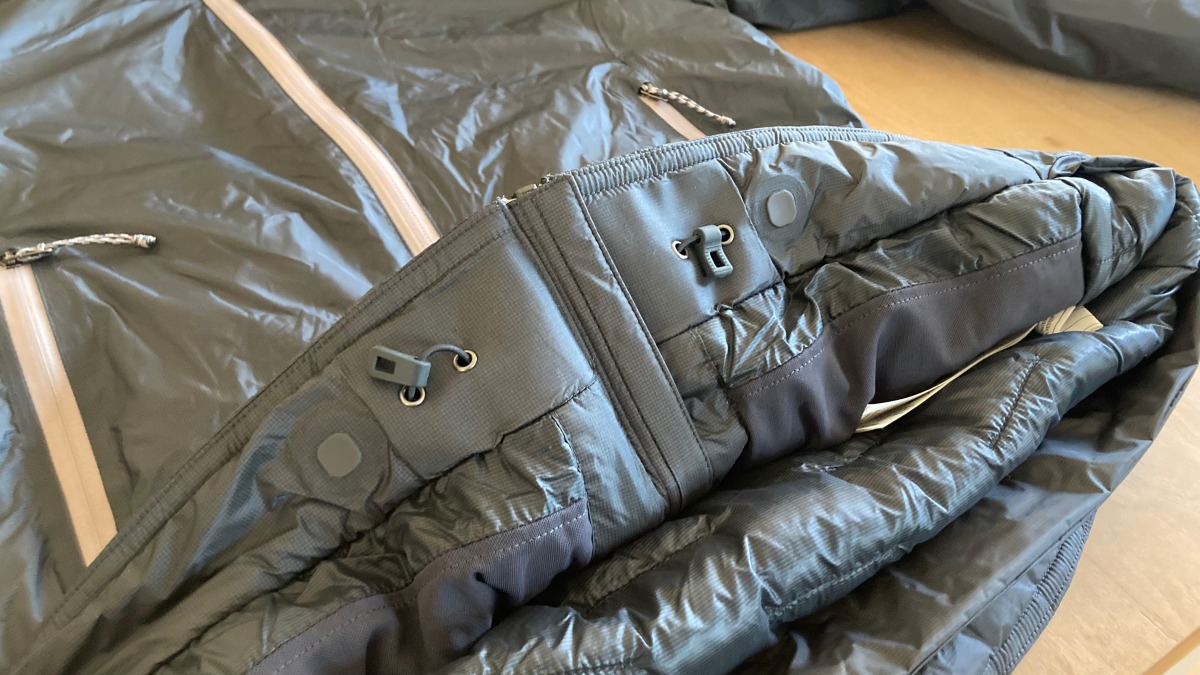
A close up of the hem illustrates the attention to detail on the Micro Puff Storm. The waist had adjustable closures and a mini snow skirt.
The waist hem is, if anything, robust with adjustable closures and a mini snow skirt to help keep elements out.
In my opinion, the Micro Puff Storm loses a few points for the missing adjustable cuff straps. I understand Patagonia was prioritizing lightness and simplicity, but I often struggle with my mitten-to-sleeve arrangement, resulting in bunched base layers or exposed wrists.
Appearance and Size
Upon first glance, the Micro Puff Storm is a cool-looking jacket. I love the simple grid texture of the nylon shell layer. The rosy-pink taped zippers stand out against a muted gray-blue jacket. The helmet-compatible hood is sleek and modern.
However, as I continued to wear the jacket, I found it to be a bit less fitted than I’m used to. The fit skews more towards belay jacket as the Micro Puff Storm fits nicely over several layers. I’m no alpinist, but sometimes I like to look streamlined. The fabric occasionally bunched in the body or in the sleeves, which may have been too long for me. The jacket performs exceptionally well but, generally, it lacks in style. By the end of my test period, I was gravitating back to the shape and look of my Arc’teryx puffys and shells— they are decidedly more fitted.
All of my other puffy coats are a size small (including a couple from Patagonia). However, I found this jacket runs large, and I could have worn an extra-small perhaps to satisfy my more fitted aspirations. Although I prefer my jackets to be oversized, I likely could have gone with an XS. If you prefer a more fitted look, maybe size down. Otherwise, you’ll have a puffy than can fit over many layers when you need to batten the hatches.
The Bottom Line
With the Micro Puff Strom, Patagonia has crafted a highly technical, high-performing jacket. It is an excellent addition for skiers who frequently pursue cold, wet, and windy missions. It also makes a lovely addition for any non-hardcore skier like me who like to be a bit warmer in the parking lot (be bold, don’t start cold). As a bonus, it serves itself well for lift-access skiing, when sweaty uphill climbs are less common and breathability is a lower priority. For what it lacks in style, remember, I like more fitted puffies, it makes up for in performance.
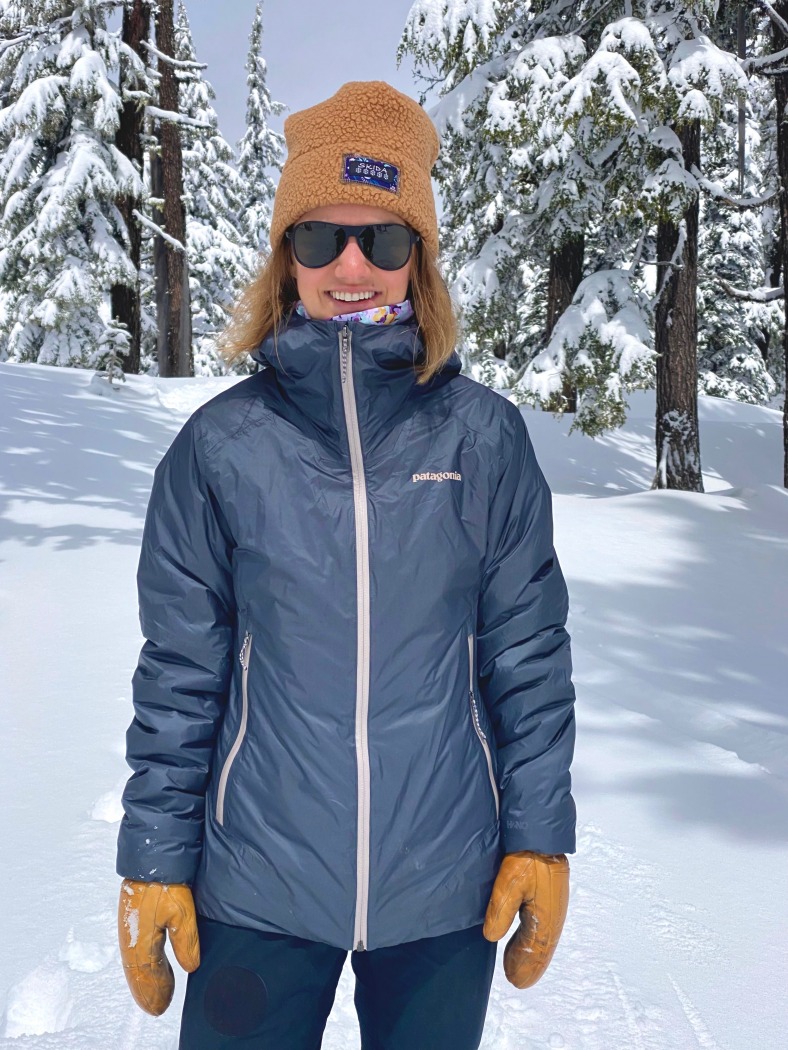
True to its name, the Micro Puff Storm provides outstanding protection against stormy weather, and I would happily recommend this jacket to most skiers.
Price: $499
Weight Women’s Small: 476g
A Midwesterner at heart, Jordan grew up skiing in the cold and icy “mountains” of northern Michigan; experts say this is where she developed her affinity for puffy coats. Not satisfied with the terrain offered by her local ski hills, Jordan moved west to Colorado and subsequently to Bend, Oregon, where she could be even closer to the outdoors. Although she is a healthcare consultant by day, her passions lie with the mountains. Jordan was accidentally introduced to backcountry skiing by her husband Jozef, who regrets suggesting a sport which requires him to walk uphill all day. On any given weekend, they can both be found on skis.
